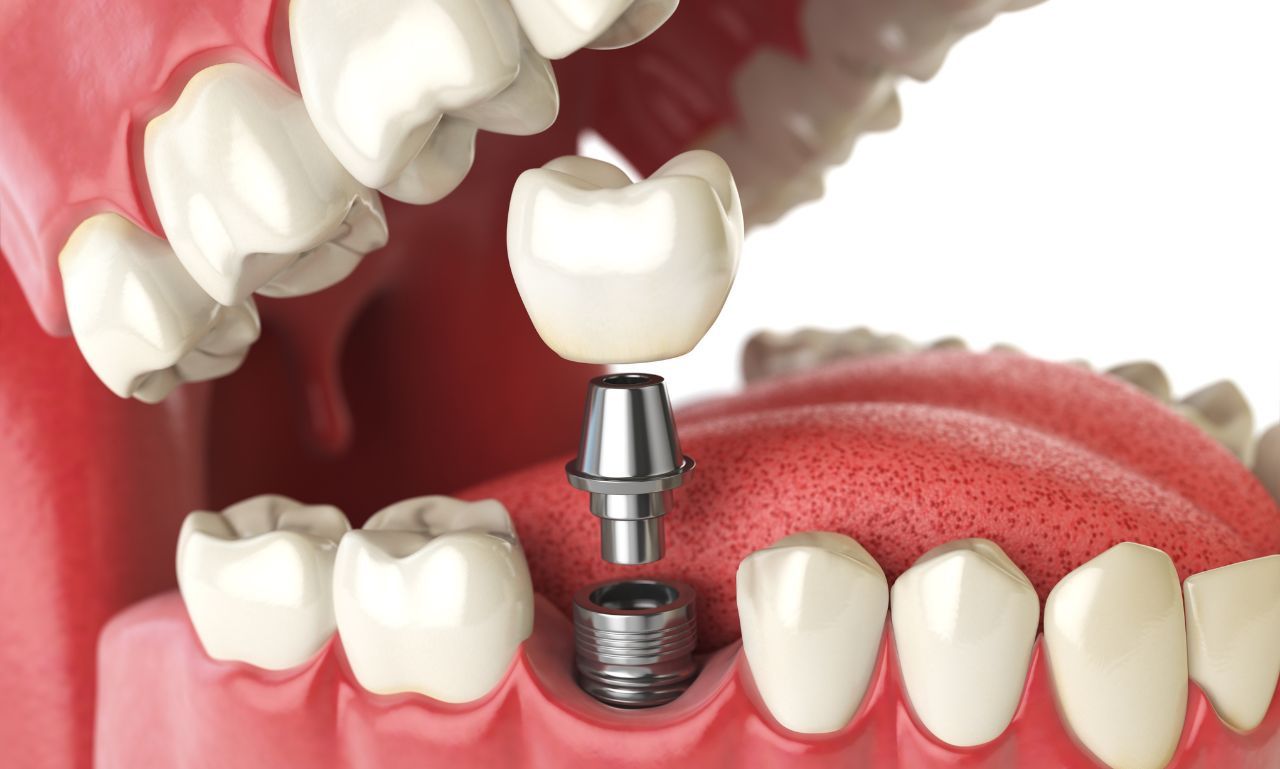Whether you're missing a single tooth or several, implants offer a durable, aesthetically pleasing solution. But what does a tooth implant look like? This article delves into the intricate details of dental implants, providing you with a comprehensive understanding that goes beyond the surface.
What Are Dental Implants?
Dental implants are artificial tooth roots, usually made of biocompatible materials like titanium or zirconia, that are surgically embedded into the jawbone. These implants provide a robust foundation for fixed or removable replacement teeth designed to match your natural teeth. Unlike dentures or bridges, implants integrate with the bone, offering a more permanent solution.
What Do Dental Implants Look Like?

When considering dental implants, it's crucial to understand their appearance and how they mimic natural teeth. Dental implants consist of three main components: the implant post, the abutment, and the crown. Each part plays a vital role in the overall look and functionality of the implant.
Implant Post
The implant post is the first component placed during the surgical procedure. This screw-like post is typically made of titanium, known for its strength and biocompatibility. It resembles a small metal rod and is inserted into the jawbone. Over time, it fuses with the bone through a process called osseointegration, creating a stable base for the abutment and crown.
Abutment
Once the implant post has fully integrated with the jawbone, the abutment is attached. This small connector, often made of titanium, ceramic, or gold, protrudes slightly above the gum line. The abutment serves as a bridge between the implant post and the crown, ensuring a secure and stable connection.
Crown
The crown is the visible part of the dental implant and is designed to replicate the look and function of a natural tooth. Crowns are typically made from porcelain or ceramic, materials that can be color-matched to blend seamlessly with your existing teeth. The result is a natural-looking tooth that is virtually indistinguishable from the rest of your smile.
Titanium Implants
Titanium implants are the most common type of dental implant. Renowned for their durability and high success rate, titanium implants have been the standard in dental practices for decades. They can withstand the significant bite forces exerted during chewing and are highly resistant to corrosion.
Zirconia Implants
Zirconia implants are a newer alternative to titanium implants. Made from a strong ceramic material, zirconia implants are metal-free and offer a more natural appearance, particularly for patients with thin or translucent gums. They are also an excellent option for those with metal allergies.
Ceramic Implants
Ceramic implants, similar to zirconia implants, provide a metal-free option for dental restoration. They offer excellent biocompatibility and a natural tooth-like appearance. Ceramic implants are particularly favored in holistic dentistry for their aesthetic and health benefits.
Do Dental Implants Look Natural?
One of the primary concerns for individuals considering dental implants is their appearance. Rest assured, dental implants are designed to look and feel like natural teeth. Skilled dental professionals use advanced techniques and materials to ensure that the crown matches the color, shape, and size of your surrounding teeth. The result is a seamless integration that enhances your smile without drawing attention to the fact that you have an implant.
Why Would You Want or Need an Implant?
There are several reasons why someone might want or need a dental implant:
- To Replace Missing Teeth: Dental implants are an ideal solution for replacing one or more missing teeth. They restore your ability to chew and speak properly while preventing the surrounding teeth from shifting.
- To Improve Oral Health: Missing teeth can lead to bone loss in the jaw. Implants stimulate the bone, preventing deterioration and maintaining facial structure.
- To Enhance Aesthetic Appearance: Implants look natural and can improve the overall appearance of your smile.
- To Increase Comfort and Convenience: Unlike dentures, implants are a permanent fixture in your mouth, eliminating the discomfort and inconvenience associated with removable prosthetics.
The Dental Implant Process

Understanding the dental implant process can help alleviate any concerns you might have. The procedure typically involves several stages:
- Initial Consultation: Your dentist will assess your oral health, take X-rays, and discuss your options.
- Implant Placement: The implant post is surgically inserted into the jawbone under local anesthesia. Healing and osseointegration take several months.
- Abutment Placement: Once the implant has fused with the bone, the abutment is attached.
- Crown Placement: A custom-made crown is fitted and secured to the abutment, completing the process.
Can You Eat the Same Things with A Dental Implant?
Yes, one of the significant advantages of dental implants is that they function like natural teeth. After the healing period, you can enjoy a varied diet without any restrictions. Implants provide a strong bite force, allowing you to eat everything from crunchy vegetables to chewy meats with confidence.
Will a Dental Implant Affect Your Speech?
Dental implants are designed to integrate seamlessly into your mouth, so they should not affect your speech. In fact, they can improve speech clarity, especially if you were previously using dentures, which can slip and cause mumbling or slurring.
Does Insurance Cover the Cost of Dental Implants?
Insurance coverage for dental implants varies. While some dental insurance plans may cover a portion of the cost, others might not. It's essential to check with your insurance provider to understand your specific coverage. Some plans may cover the crown but not the implant post or abutment.
How Painful Are Dental Implants?
The thought of dental surgery can be daunting, but most patients report that the discomfort is manageable. The procedure is usually performed under local anesthesia, minimizing pain during the surgery. Post-operative pain can typically be managed with over-the-counter pain relievers and usually subsides within a few days.
Conclusion
Dental implants are a transformative solution for missing teeth, offering both functional and aesthetic benefits. By understanding what a tooth implant looks like and the process involved, you can make an informed decision about your dental health. With the right care and expertise, dental implants can provide a lifetime of smiles.




